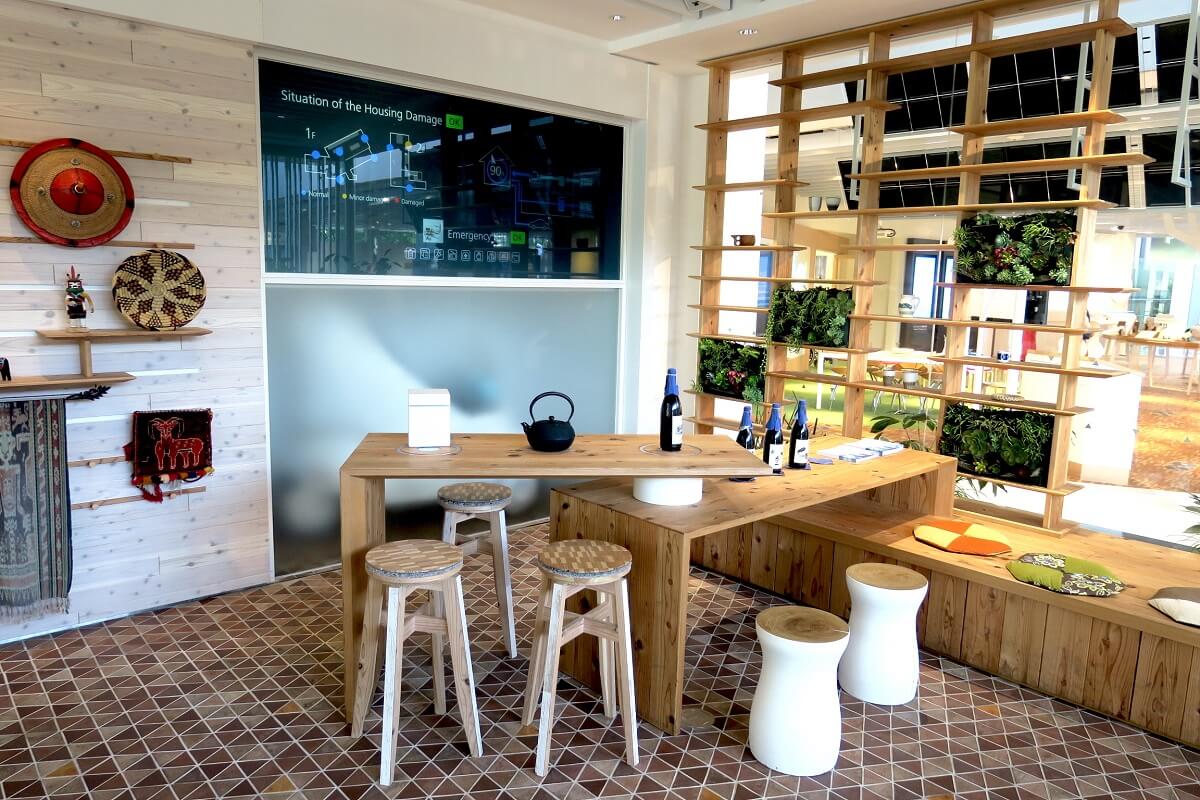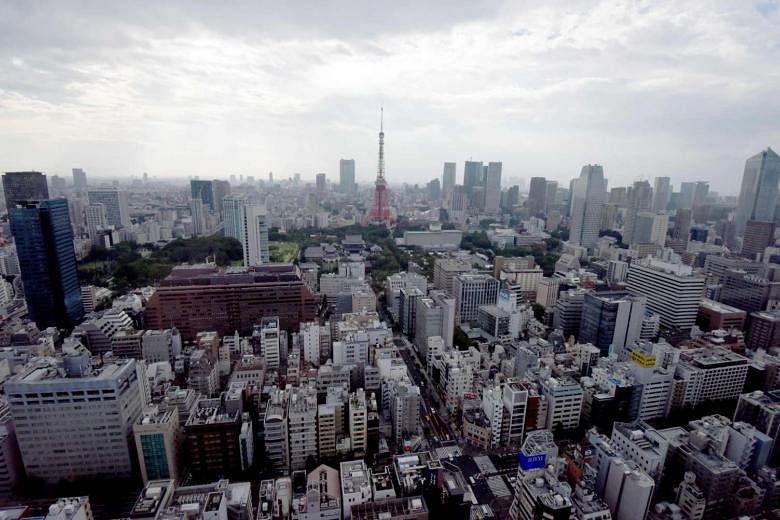TOKYO - Saturday (Aug 20) marks exactly two months since I landed in Tokyo for my stint as The Straits Times' Japan Correspondent.
And boy, what a whirlwind two months it has been. Ever since I got here, there have been two elections, a rare public address by Emperor Akihito in which he hinted about royal succession issues, a very unfortunate mass killing of persons with disabilities, and many developments in regional maritime disputes.
Outside the day-to-day news cycle, I've also experienced - for the first time in my life - earthquakes (slight tremors, thankfully) and just earlier this week, a typhoon.
I've also taken the chance to do what I believe many Singaporeans in my generation would also do. I've occasionally binged on Bake Cheese Tarts (no queue, unlike in Singapore); found the perfect cafe to work in (Toranomon Koffee, for the record, which is also where I wrote my draft to this blog post); and gone on an Instagram spree with friends who visit (with so many nice backdrops for #ootd spots, why not?).
Above all, I've also had a few observations that come with living abroad. Here are four of them:
1. Living abroad contributes to a surge in national pride
It was an experience watching the National Day Parade with fellow Singaporeans over hearty curry chicken and bak kut teh, and chatting in Singlish without concerns about being misunderstood. And it was also an experience, waking up early on a Saturday to watch national swimmer Joseph Schooling set an Olympic record and win Singapore's first gold medal - made all the more memorable by an extremely excitable commentary in Japanese.
I also admit to having goosebumps when the National Anthem was played on both occasions - something that I've rarely felt before and is one of those things that I admit I take for granted when living back home.
The widespread availability of good food is another, but I do seek comfort in the fact that if the craving ever hits - though I've yet to visit a Singapore eatery here - there is always Wee Nam Kee and Paradise Dynasty in Ginza.
Singapore Seafood Republic at Resorts World Sentosa also has an outlet here in Shinagawa, while Jing Hua, the xiao long bao specialist in Bugis, is also here. And Janice Wong, the desserts chef behind 2am:dessertbar in Holland Village, has a desserts stall in Shinjuku.
What's more, if I ever need a quick bak kwa fix, Bee Cheng Hiang will soon launch its debut Japanese store in Ginza - after nearly two decades of negotiations with the stringent local authorities over food licences.
2. The Japanese people are a resilient lot

In July, I took part in a two-day press tour to Miyagi and Sendai prefectures for the 1,000km Relay to Tokyo, which involved 1,500 runners in 163 legs over 15 days. The annual summer affair is held to raise awareness of the recovery efforts in the affected prefectures, and to show solidarity with victims of the triple disaster that struck on March 11, 2011.
I met two brothers - Mr Kanta Suenaga, 39, and his younger brother Koya, 26 - who chose to stay and rebuild Suenaga Kaisan Co, the seafood business that their father had founded 40 years ago.
The elder Mr Suenaga, the company's president, said: "Because of the disaster we lost everything, and since we lost everything, we thought maybe it's a good chance to start afresh. That's how we rebuilt a new plant - the old plant was damaged, and was rebuilt with subsidies from the government."
He added that rather than dealing with only fresh seafood for the domestic market, as had been the case in the past, the company now dabbles in processed seafood that is now exported overseas to markets such as Hong Kong, Taiwan, Thailand and the United States.
Mr Suenaga also confessed that manpower is an issue he is struggling with. "But to make up for the lack of manpower we have installed more machinery."
And then there is the Yuriage Harbour Morning weekend market, which had been washed away by the tsunami. It reopened in 2013 as a series of makeshift stalls, and today even has barbecue pits where visitors can immediately grill and eat the seafood they buy.
Mr Koichi Sakurai, chief executive of the market's cooperative, said over a soundtrack of Hawaiian music from an ongoing performance: "Before the disaster we had about 3,000 to 4,000 visitors every Sunday. But after, the number increased to 6,000 to 8,000 visitors even though there are no longer residents living in the vicinity."
He added that he and his partners took the initiative to rebuild the market. "We went to the banks to try to borrow money, even before the government gave us any subsidies."
3. As Tokyo gets more crowded, it badly needs barriers at its train stations
One area that Japan really could look towards Singapore is in the installation of platform barriers at all its crowded train stations.
Almost every other day there are updates of jinsei jiko that delay the otherwise prompt train services in Tokyo. Sometimes it is suicide, other times accidents caused by drunkenness or inattentiveness. They happen so frequently that the media, for the most part, do not report them.
There have not been any reported accidents related to the Pokemon Go craze as yet - interestingly, the train companies have introduced announcements asking commuters to watch where they are walking, apparently after the launch of the game.
But the numbers are alarming: There were 3,673 platform falls in 2014 - up from 2,442 in 2009 - according to government statistics. And only 77 of 251 stations that serve more than 100,000 passengers per day are equipped with barriers.
Just this week, a sorry incident made the news. A blind 55-year-old man fell onto the tracks and was hit by an oncoming train at the Aoyama-itchome station on the Ginza line, near the business district.
News reports said the man's guide dog was with him, but he fell while trying to avoid a pillar that was blocking the yellow Braille floor tiles along the platform. They added that the incident could well have been prevented - had there been platform barriers.
4. Japan is well-poised to play catch-up in the technology game

Japan might have lost its innovation mojo from two decades lost to economic stagnation - it is not known for innovations of the Silicon Valley sort, while experts also say Japan has been left in the dust by Europe and the United States on this front.
But its strength lies in technical innovation, and indeed, in the past two months, I've seen Nissan launch a semi-autonomous car, a demonstration of Panasonic's futuristic "smart home", and even a hotelier manage to launch the 17-storey luxury ryokan Hoshinoya Tokyo - with a hot spring on the rooftop to boot - in the heart of space-starved Tokyo.
The Japanese government has also listed artificial intelligence as a pillar in its economic growth strategy in the face of a declining population.
The signs are hopeful. A semi-independent Council for Science, Technology and Innovation has been set up in Japan's Cabinet Office.
Executive member Yuko Harayama, who was formerly deputy director of the directorate for science, technology and industry of the Organisation for Economic Co-operation and Development (OECD), says the council is responsible for looking at new technological paradigms and disruptive innovations to be adopted. "The government is shouldering a certain risk," she said.
University of Tokyo Graduate School of Engineering associate professor Yutaka Matsuo also points out that the budget to develop artificial intelligence has been on the rise.
He candidly says that Japan has "no chance and should give up in developing technologies for informational tasks", as it is lagging far behind the likes of Google, Facebook, Microsoft, Apple and Amazon.
But he sounds a hopeful note on Japan's robotics development, which has already been rolled out in places such as eldercare. And when intuitive advancements can be made, this can ease processes in less-than-homogeneous industries such as agriculture, construction and food processing which deal with varying sizes, colours and shapes.


